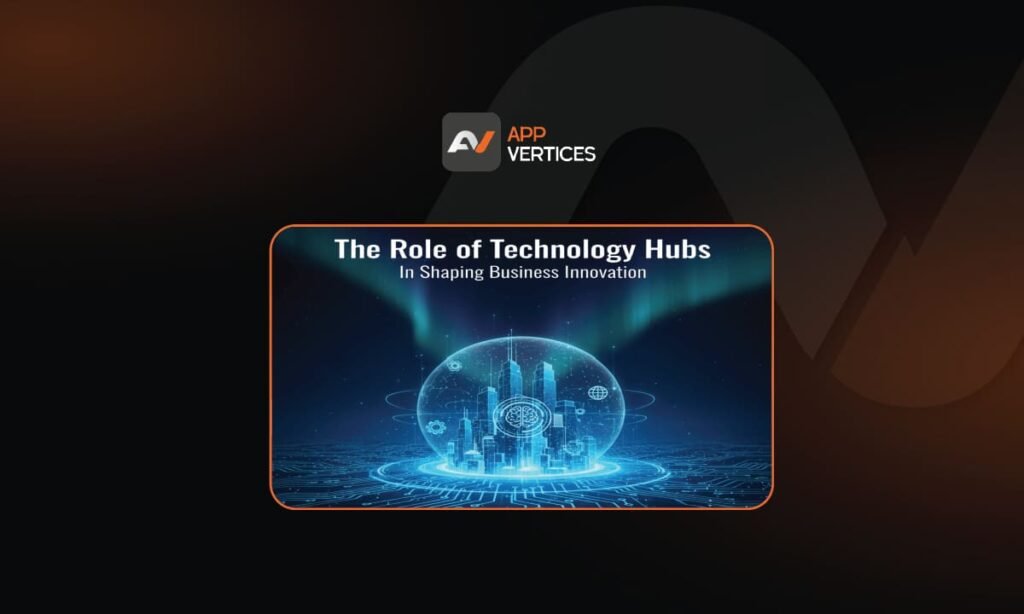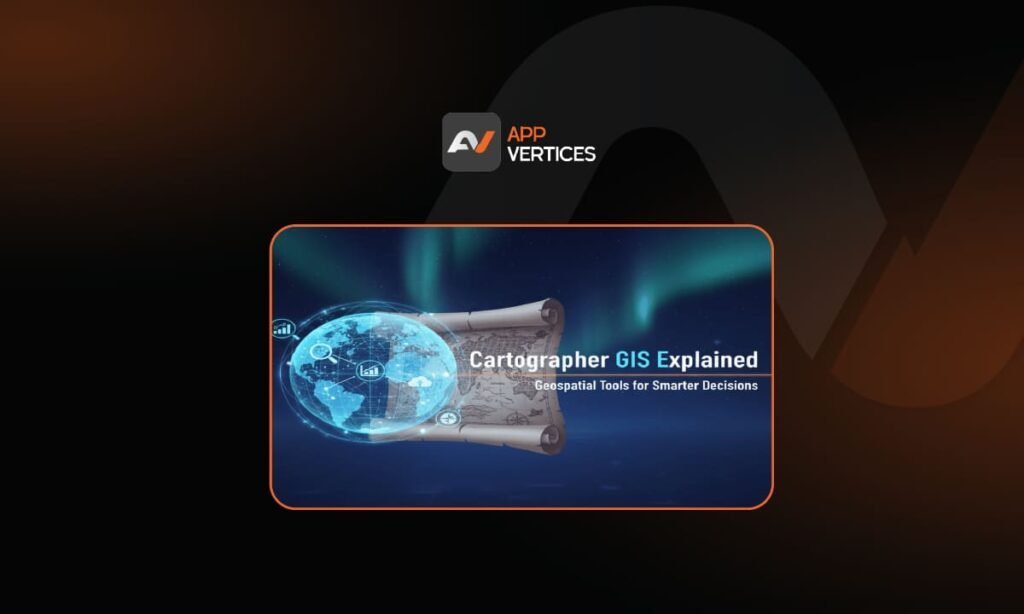The Next Wave of Innovation in Mobile Applications

Introduction Mobile applications have moved far beyond being simple conveniences. A decade ago, we used apps mostly for basic tasks such as checking email, playing games, or doing quick calculations. Today, they’re the core of how we live, work, and interact with the world. Businesses rely on them to reach customers. People depend on them for banking, healthcare, shopping, entertainment, and even managing their homes. What makes this space exciting is its constant pace of change. New technologies and rising user expectations push apps to evolve continuously. What felt futuristic yesterday like AI-powered recommendations or augmented reality shopping is quickly becoming standard. As we step into the next wave of mobile innovation, one thing is clear: iOS app developers are at the forefront. They are shaping the future of mobile experiences inside Apple’s ecosystem, ensuring apps are smarter, more secure, and more connected than ever before. The Evolution of Mobile Applications When mobile apps first appeared, their purpose was simple. Think calculators, alarm clocks, and SMS tools. They were lightweight, single-function solutions. But as smartphones became more powerful, apps transformed into ecosystems. Banking apps replaced trips to the branch. Retail apps redefined shopping. Entertainment apps gave us music, movies, and games on demand. Healthcare apps started tracking fitness and monitoring vital signs. Today, apps don’t just serve they anticipate. They predict what you’ll want, personalize your experiences, and connect seamlessly across multiple devices. This rapid transformation sets the stage for what’s coming next, where apps won’t just support our routines but fundamentally reshape them. Key Drivers of the Next Wave Several forces are pushing mobile applications into new territory. Let’s break down the biggest ones. Artificial Intelligence and Machine Learning AI is powering personalization at a scale we’ve never seen. Apps can now predict user behavior, recommend content, and automate routine actions. Think of a fitness app that not only tracks workouts but designs custom training plans based on your habits and progress. 5G Connectivity 5G brings faster speeds and lower latency, unlocking richer, more interactive experiences. Streaming high-definition video, real-time AR navigation, or multiplayer gaming without lag is only possible at this level of connectivity. Internet of Things (IoT) Integration Smart homes, wearable devices, and connected cars all tie back to mobile apps. They’re becoming the central hub that controls and monitors the growing web of IoT devices around us. Augmented and Virtual Reality AR and VR are creating immersive experiences in industries like retail, education, and entertainment. Imagine trying on clothes virtually, attending a live lecture through VR, or exploring a 3D model of your future home all powered by apps. The common thread? To make these innovations seamless, businesses need iOS app developers who know how to integrate emerging tech into apps without sacrificing usability or security. The Role of iOS App Developers in Shaping Innovation Apple’s ecosystem consistently sets benchmarks for mobile innovation. The company’s focus on design, performance, and security raises expectations across the industry. For businesses, this means one thing: if you want your app to stand out, it has to meet Apple’s standards. That’s where iOS app developers come in. They’re not just coders; they’re problem-solvers and designers of user experiences. By leveraging tools like Swift for development, ARKit for augmented reality, and Core ML for machine learning, they bring advanced ideas to life. But innovation isn’t just about adding flashy features. It’s about balance. iOS developers ensure that apps remain intuitive and secure while still pushing boundaries. This is why businesses—from startups to global brands—rely on skilled iOS developers to deliver polished, future-ready apps that stand up in a crowded marketplace. Emerging Trends Businesses Should Watch Innovation isn’t only about technology it’s also about how people use it. Here are the trends shaping what comes next: Super Apps Super apps bundle multiple services into one platform. Instead of using separate apps for payments, messaging, and shopping, users can do it all in a single app. This trend is especially big in Asia and gaining traction globally. Voice Interfaces and AI Assistants Voice is becoming a natural way to interact with apps. Siri integration and other voice-enabled tools are pushing businesses to rethink user interfaces beyond taps and swipes. Privacy-First Development Apple has set a strong example with its privacy features, such as app tracking transparency. Users now expect apps to protect their data. Privacy-first development isn’t optional it’s a core requirement. Cross-Platform Experiences iOS isn’t just about iPhones anymore. iPads, Apple Watch, and even Apple TV are part of the ecosystem. Businesses are increasingly looking to iOS app developers to deliver seamless, multi-device experiences. For companies, keeping an eye on these trends is essential. Missing out means falling behind in a market that’s advancing quickly. Also, For additional context on how collaborative ecosystems fuel progress, this insight into technology hubs and business innovation explains how hubs connect startups, enterprises, and talent. It shows how these environments accelerate growth, foster creativity, and support the adoption of new technologies across industries. Real-World Examples of Innovation Theory is one thing, execution is another. Let’s look at real examples of how mobile apps are transforming industries: Each of these breakthroughs reflects the creativity and technical depth of iOS app developers who bring advanced technology into user-friendly experiences. Also, For organizations aiming to modernize how they operate, end-to-end digital transformation services help unify technology, data, and processes into one streamlined system. Their approach covers strategy, platform integration, and scalable infrastructure so teams can move faster, reduce inefficiencies, and unlock new growth opportunities. Challenges in the Next Wave of Mobile App Development Innovation doesn’t come without obstacles. Businesses and developers face several challenges in this fast-moving space: The good news is that experienced iOS developers know how to navigate these challenges. Their expertise lies in turning complex requirements into smooth, functional, and appealing apps. The Future Outlook So, where are mobile apps headed over the next five to ten years? Expect deeper integration of AI, greater use of AR/VR, and more apps tied to wearables and IoT
The Role of Technology Hubs in Shaping Business Innovation

Introduction Over the past two decades, the heart of business innovation has shifted. It’s no longer confined to boardrooms or research labs. Instead, it’s happening in technology hubs geographic clusters where talent, investment, and entrepreneurial energy come together to spark change. From Silicon Valley’s legendary startup culture to Austin’s creative tech scene and Dallas’ rapid rise as a digital powerhouse, these hubs are driving how businesses adapt and grow. Here’s the thing: hubs aren’t just physical spaces filled with office buildings and co-working spaces. They’re ecosystems that feed off collaboration, new ideas, and shared resources. And in cities like Dallas, one clear expression of this innovation is app development. Companies of every size are leaning on local expertise to build smarter tools, streamline operations, and connect more deeply with customers. In this blog, we’ll break down what makes technology hubs so powerful, why Dallas is emerging as a leader, and how app development Dallas is reshaping the future of business innovation. What Are Technology Hubs? A technology hub is more than a cluster of tech companies in one location. It’s an environment where innovation is actively cultivated. These hubs combine three essential ingredients: talent, infrastructure, and capital. When you put highly skilled developers, strong institutions, and investors in close proximity, you create fertile ground for growth. Hubs also act as ecosystems. Startups, established enterprises, accelerators, universities, and service providers all interact, share knowledge, and build upon each other’s strengths. The result is a self-sustaining cycle of innovation. This is why tech hubs are often breeding grounds for disruptive businesses. They accelerate progress by providing entrepreneurs with what they need most support, expertise, and opportunities. And when we look at the role of app development Dallas within this structure, it’s clear how hubs can shape industries far beyond their geographic boundaries. How Technology Hubs Drive Business Innovation Access to Deep Talent Pools When a hub attracts skilled developers, engineers, and creative thinkers, it creates a critical mass of talent. Businesses in those regions don’t have to struggle to find the expertise they need. For example, Dallas has seen a surge of software engineers and app developers entering the market, drawn by opportunities in healthcare, logistics, and finance. A Culture of Collaboration Hubs thrive because they bring people together. Co-working spaces, startup accelerators, and local events foster environments where ideas flow. A retail entrepreneur can meet an AI specialist, while a logistics company might connect with an app developer who can digitize their operations. That kind of cross-pollination doesn’t happen in isolation. Capital and Funding Networks Innovation often stalls without resources. Technology hubs are magnets for venture capital and angel investors who are specifically looking for the next breakthrough. This access to funding allows businesses to test, scale, and expand ideas quickly. Infrastructure and Support Systems From cutting-edge universities to incubators and corporate partnerships, hubs provide the infrastructure businesses need to grow. In Dallas, for example, the combination of major corporations, research institutions, and supportive local policies creates a fertile ground for app development and broader digital transformation. All of these factors explain why app development Dallas is gaining momentum it exists within a system designed to nurture innovation and scale solutions rapidly. Dallas as a Rising Tech Hub Dallas might not have the decades-long reputation of Silicon Valley, but it’s quickly carving its own place as a leading tech hub. Why? Several factors converge here. First, the cost of living and operating a business in Dallas is lower than in many coastal hubs, making it attractive for startups and corporations alike. Second, Dallas has one of the most diverse economies in the U.S., with strong industries in healthcare, retail, logistics, and finance. This diversity creates demand for custom technology solutions across sectors. Another major factor is the corporate presence. Fortune 500 companies are headquartered in Dallas, and their need for innovation spills over into partnerships with local developers and startups. App development in Dallas is thriving because it serves both sides of the spectrum: startups looking to disrupt and enterprises seeking to modernize. This dual demand is accelerating the city’s rise as an innovation hub. The Role of App Development in Dallas’ Tech Ecosystem Custom app development isn’t just a technical service it’s a driver of business growth. In Dallas, this is particularly evident in three ways: Startups Leading with Mobile Apps Many Dallas startups begin their journey with an app idea. Whether it’s a fintech platform simplifying payments or a health-tech app connecting patients and doctors, these ventures depend on app development to enter the market and compete with established players. Enterprises Modernizing Legacy Systems Large corporations in Dallas often carry legacy systems that hold back efficiency. By investing in custom enterprise apps, they’re streamlining processes, integrating operations, and creating better customer experiences. This modernization keeps them agile in competitive industries. Local Businesses Scaling with Dallas Developers Even mid-sized and local businesses are tapping into Dallas app developers. From retail shops moving into e-commerce to service providers creating booking apps, the local expertise and understanding of industry needs give Dallas developers a unique edge. The proximity, cultural alignment, and deep knowledge of regional industries make working with Dallas-based developers a strategic advantage not just a convenience. Case Studies: Innovation in Action Let’s look at how app development Dallas is translating into real business impact: These cases illustrate the broader theme: innovation doesn’t happen in isolation. It’s enabled by local talent, supported by the hub ecosystem, and amplified by businesses willing to invest in digital transformation. Challenges for Tech Hubs and Dallas’ Approach No tech hub has a perfectly smooth path. Dallas, like others, faces challenges such as: Dallas is addressing these challenges head-on. Investments in STEM education, partnerships between corporations and startups, and a growing venture capital scene are all part of its strategy. These efforts not only keep talent local but also ensure that innovation thrives beyond early stages. Also, To better understand how enterprises rely on digital infrastructure, check out this overview of apps that form the
Building the Digital Backbone: Apps That Power Modern Enterprises

Introduction Think about how enterprises operate today. The walls of a corporate office or a sprawling supply chain are no longer the true foundation of a business. What really keeps an organization running is its digital backbone: the apps and systems that connect people, processes, and data. From the moment a customer places an order online to the instant a manager checks performance dashboards, enterprise applications are at work behind the scenes. They’re the invisible infrastructure enabling speed, efficiency, and scalability. Without them, modern enterprises grind to a halt. This blog breaks down what the digital backbone really means, the types of apps that build it, and why enterprise app development is central to keeping businesses resilient. We’ll also explore real-world examples, common challenges, and where the future is heading. What We Mean by “Digital Backbone” At its core, the digital backbone is the integrated network of enterprise applications that keep a company moving. It’s not a single system, but rather a web of interconnected apps that manage operations, communication, customer interactions, and data-driven decision-making. The strength of this backbone lies in two things: resilience and adaptability. A resilient digital infrastructure keeps the enterprise running smoothly even when external conditions shift. An adaptable one evolves as the business grows, new technologies emerge, or customer expectations change. Enterprise app development is the process that builds and maintains this backbone. By tailoring apps to a company’s specific needs rather than forcing workflows into generic software businesses gain the flexibility and strength they need to stay competitive. Core Categories of Enterprise Apps A strong digital backbone isn’t built on one kind of app. It’s an ecosystem. Here are the four main categories every enterprise depends on: 1. Operational Efficiency Apps These include ERP systems, supply chain management platforms, and HR applications. They handle the nuts and bolts of business: inventory tracking, payroll, compliance, and resource planning. A retail enterprise, for example, can’t operate efficiently without a system that aligns inventory with demand forecasts. 2. Collaboration and Communication Tools Platforms like Slack, Microsoft Teams, or Asana ensure that teams work together seamlessly across departments and locations. In an era of hybrid and remote work, these apps form the nervous system of the enterprise, enabling instant messaging, file sharing, and project tracking. 3. Customer-Facing Applications Mobile apps, customer portals, and e-commerce platforms are where enterprises meet their customers directly. These applications aren’t just service points, they’re brand experiences. A well-designed mobile app can mean the difference between retaining a customer or losing them to a competitor. 4. Data and Analytics Platforms Business intelligence tools, dashboards, and AI-powered analytics provide insights that guide decision-making. Without them, enterprises operate in the dark. The ability to track KPIs in real time, predict demand, or personalize customer outreach comes from these data-driven systems. Together, these categories form the backbone that allows enterprises to operate efficiently, communicate clearly, serve customers better, and make smarter decisions. Why Enterprise App Development Matters You might wonder: why not just use off-the-shelf apps? The truth is, generic solutions only go so far. Enterprise app development provides the customization and scalability businesses need. Here’s why it matters: Customization Where It Counts Off-the-shelf tools often force companies to adapt their workflows to fit the software. With enterprise app development, the software is designed to fit the business. That means smoother operations, less wasted time, and better alignment with strategic goals. Scalability Built In As enterprises grow, so do their requirements. A system that works for 200 employees may break down at 2,000. Custom-built apps scale with demand, ensuring that growth doesn’t create bottlenecks. Security and Compliance Enterprises handle sensitive customer and financial data. A security flaw in a generic system could expose the business to major risks. Custom development allows for stronger security protocols and industry-specific compliance measures. Competitive Advantage When speed, efficiency, and customer experience define success, the right apps can deliver a clear edge. Enterprises that invest in custom solutions often respond faster to market changes and deliver better customer experiences. Also, For readers who want a deeper understanding of how mapping technologies support smarter decision-making, this guide to Cartographer GIS and geospatial tools offers valuable insights. It explains how GIS platforms integrate data, visualization, and analytics to solve complex problems across industries, making it a perfect complement to discussions on enterprise technology. The Building Blocks of Successful Enterprise App Development Building enterprise apps isn’t just about writing code. It’s about strategy and foresight. Here are the pillars of success: Integration-First Mindset Apps shouldn’t operate in silos. A finance app should be able to pull data from sales, HR should connect with payroll, and analytics should cover everything. Integration ensures the backbone works as a cohesive unit. Cloud Adoption The cloud provides flexibility, scalability, and access from anywhere. For enterprises managing global teams or customers, cloud-native apps are non-negotiable. Mobile-First Design Employees and customers expect mobility. Whether it’s a sales rep accessing CRM on the road or a customer browsing a product catalog, mobile-friendly enterprise apps are critical. User Experience Matters An app only works if people actually use it. That means prioritizing intuitive design and functionality. Poor UX leads to resistance and wasted investment. AI and Automation Enterprises that future-proof their backbone are already weaving in AI and automation. From chatbots handling customer queries to predictive analytics in supply chains, these features boost efficiency and insight. Real-World Examples To see the impact of enterprise app development, let’s look at some practical scenarios: In each case, the investment in enterprise app development translated into measurable business gains. Common Challenges in Enterprise App Development Of course, building the digital backbone isn’t without challenges: The key is partnering with experienced developers and creating a strategy that balances innovation with practicality. Future Trends Shaping the Digital Backbone Enterprise app development isn’t static, it’s evolving rapidly. Here are the trends shaping the next decade: Enterprises that anticipate these trends will be better positioned to adapt and thrive. Conclusion & Call to Action The digital backbone isn’t a
Cartographer GIS Explained: Geospatial Tools for Smarter Decisions

Introduction Geographic Information Systems (GIS) are at the heart of how modern organizations analyze, visualize, and make decisions based on spatial data. Among the wide range of tools available today, Cartographer GIS has emerged as a powerful solution that combines mapping, analytics, and data visualization to help governments, businesses, and researchers make informed choices. From urban planning and environmental monitoring to logistics and disaster management, the role of Cartographer GIS in geospatial intelligence is critical. This article provides a comprehensive look at Cartographer GIS: its functions, applications, benefits, and how it compares to other GIS software solutions. By the end, you’ll have a solid understanding of how this technology works and why it is central to smarter decision-making in today’s data-driven world. What is Cartographer GIS? Cartographer GIS is a geospatial platform designed to capture, store, manipulate, analyze, manage, and present spatial or geographic data. Unlike basic mapping tools, it integrates multiple data layers, allowing users to uncover complex spatial relationships. The term “cartographer” refers to a mapmaker, and in this context, the software serves as a digital extension of traditional cartography—enhanced with analytics and automation. At its core, Cartographer GIS answers three fundamental questions: Also, When discussing geospatial intelligence in the cloud, it’s also important to understand the programming foundations that power scalable applications. This guide to the best programming languages for cloud computing explores which languages are most effective for building enterprise-grade cloud solutions. Pairing the right programming language with Cartographer GIS ensures that organizations can manage spatial data efficiently while taking advantage of modern cloud infrastructure. Core Functions of Cartographer GIS Cartographer GIS is not just about drawing maps. It integrates advanced functionalities that make it a powerful tool for geospatial analysis. The most common functions include: 1. Data Capture and Input Cartographer GIS can ingest data from multiple sources: satellite imagery, GPS devices, remote sensors, drones, and traditional surveys. This versatility ensures it can handle structured and unstructured data. 2. Data Storage and Management Using spatial databases, the system stores huge volumes of geographic data efficiently. Features like indexing and compression allow organizations to manage data without compromising speed or accessibility. 3. Spatial Analysis At the heart of Cartographer GIS is its ability to conduct spatial analysis. Users can identify patterns, measure distances, calculate areas, and model scenarios. For example, city planners can analyze traffic congestion patterns using real-time GPS data. 4. Data Visualization Cartographer GIS turns complex data into easily understandable maps and dashboards. Heat maps, 3D visualizations, and interactive layers help stakeholders grasp insights quickly. 5. Decision Support By combining location data with statistical modeling, Cartographer GIS acts as a decision-support system. Businesses can optimize delivery routes, governments can allocate resources more effectively, and researchers can model environmental risks. Key Features of Cartographer GIS To fully understand its value, here are the standout features that make Cartographer GIS unique: Why Cartographer GIS Matters The importance of Cartographer GIS lies in its ability to turn raw data into actionable intelligence. Here’s why it matters: Applications of Cartographer GIS Across Industries 1. Urban Planning City planners use Cartographer GIS to analyze land use, monitor infrastructure development, and predict population growth. By integrating zoning data with transportation patterns, cities can make smarter decisions about expansion. 2. Environmental Monitoring Environmental scientists rely on GIS to track deforestation, monitor water quality, and model climate change effects. Cartographer GIS can analyze satellite imagery to detect illegal logging or assess wildfire risks. 3. Healthcare Hospitals and public health agencies use geospatial tools to track disease outbreaks, plan resource allocation, and improve accessibility to medical facilities. 4. Logistics and Supply Chain Companies can optimize delivery routes, reduce fuel consumption, and improve supply chain resilience using Cartographer GIS. The system integrates real-time traffic data for faster, more cost-effective deliveries. 5. Disaster Management Emergency services use Cartographer GIS to model natural disasters, plan evacuation routes, and allocate relief resources. By simulating different scenarios, authorities can prepare for hurricanes, floods, or earthquakes. 6. Agriculture Farmers and agribusinesses use GIS to implement precision farming techniques. Data on soil conditions, weather, and crop performance helps maximize yields while reducing environmental impact. Semantic Connections: Related GIS Concepts When discussing Cartographer GIS, several related terms and concepts naturally come into play: These concepts highlight how Cartographer GIS fits into the broader landscape of geospatial science and technology. Comparing Cartographer GIS with Other GIS Software Solutions The GIS market is crowded with tools, ranging from open-source platforms to enterprise-grade solutions. When compared with other GIS Software Solutions, Cartographer GIS stands out for its balance of usability, scalability, and advanced analytics. Challenges and Limitations of Cartographer GIS No software is perfect, and Cartographer GIS also comes with challenges: By acknowledging these limitations, organizations can better prepare for adoption. Future of Cartographer GIS and Geospatial Tools The future of Cartographer GIS is closely tied to emerging technologies: These trends indicate that Cartographer GIS will continue to evolve as a critical enabler of geospatial intelligence. Final Thoughts Cartographer GIS is more than a mapping tool—it is a comprehensive geospatial platform that empowers organizations to make smarter, data-driven decisions. Its wide range of applications across industries, combined with advanced analytics and real-time integration, make it indispensable in today’s complex world. By integrating with broader GIS software solutions, Cartographer GIS provides the flexibility and scalability enterprises need to thrive. As technologies like AI, cloud computing, and IoT continue to grow, the role of Cartographer GIS in shaping smarter decisions will only expand.
Best Programming Languages for Cloud Enterprise Development

Introduction The growth of cloud computing has transformed how businesses build, deploy, and scale their software. Enterprises are moving from traditional on-premise infrastructure to dynamic, cloud-based environments that demand robust, flexible, and scalable solutions. With this shift, choosing the best programming language for cloud computing has become a critical decision for developers and organizations alike. This article explores the top cloud computing programming languages, their strengths, and why they are particularly well-suited for enterprise cloud development. It also provides insights into how enterprises can leverage these languages for modern cloud application development and long-term scalability. Why Programming Languages Matter in Cloud Computing The cloud has changed the way software is designed and delivered. Applications in the cloud must handle distributed workloads, manage real-time data, ensure high availability, and integrate seamlessly with third-party services. As a result, not every programming language is equally effective for cloud computing programming. Key factors that make a programming language suitable for cloud environments include: When choosing a cloud programming language, enterprises must evaluate these dimensions to ensure long-term stability and performance. The Role of Cloud Programming Languages in Enterprise Development In modern organizations, software applications are no longer standalone. They integrate with cloud databases, run in containerized environments, and scale dynamically based on demand. Therefore, cloud computing languages must not only support traditional coding practices but also align with distributed computing principles. Some programming languages excel in rapid prototyping, while others shine in backend scalability or system-level integrations. Knowing which cloud programming languages to prioritize can help enterprises streamline projects and avoid technical debt. Also, For a deeper dive into sector-specific vulnerabilities, you can explore this detailed resource on healthcare cybersecurity threats and risks. It highlights how cyber attacks are increasingly targeting hospitals and patient care systems, drawing attention to the unique challenges healthcare organizations face. Linking these insights with broader cloud enterprise security strategies can help businesses build more resilient and compliant infrastructures. Best Cloud Computing Languages for Enterprises Let’s examine the best programming languages for cloud computing and why they stand out in enterprise contexts. 1. Java Overview: Java has long been a cornerstone of enterprise development. Its portability and reliability make it one of the most popular cloud computing programming languages. Why Java Works for the Cloud: Use Cases: 2. Python Overview: Python’s simplicity and readability make it a go-to language for rapid cloud development. It is often seen as the best cloud computing language for machine learning and data-driven applications. Why Python Works for the Cloud: Use Cases: 3. JavaScript (Node.js) Overview: JavaScript dominates front-end development, but with Node.js, it has become equally powerful for backend and cloud applications. It is one of the most versatile cloud programming languages. Why JavaScript Works for the Cloud: Use Cases: 4. Go (Golang) Overview: Developed by Google, Go is a modern cloud programming language designed for efficiency and concurrency. Its simplicity and performance make it popular for cloud-native development. Why Go Works for the Cloud: Use Cases: 5. C# Overview: C# is a core part of Microsoft’s .NET ecosystem and integrates seamlessly with Azure, making it one of the top cloud computing programming languages for enterprises already invested in Microsoft technologies. Why C# Works for the Cloud: Use Cases: 6. Ruby Overview: Known for its elegant syntax, Ruby and its Rails framework have been widely used for web development. While less dominant today, it still plays a role in cloud application development. Why Ruby Works for the Cloud: Use Cases: 7. PHP Overview: PHP has powered the web for decades. While some see it as less modern, it still ranks among popular cloud computing programming languages for backend services. Why PHP Works for the Cloud: Use Cases: Comparing the Best Programming Languages for Cloud Computing Language Strengths Ideal Use Cases Java Secure, portable, enterprise-grade Banking, large systems Python AI/ML, rapid prototyping, serverless Analytics, automation JavaScript (Node.js) Event-driven, cross-platform Real-time apps, APIs Go Fast, concurrent, cloud-native Microservices, DevOps tools C# Azure integration, enterprise support Hybrid cloud, .NET apps Ruby Fast development, Rails ecosystem SaaS, startups PHP Mature, widely supported CMS, eCommerce This comparison shows that the best cloud computing language depends on the enterprise’s priorities—scalability, speed, or integration with existing ecosystems. Integrating Cloud Programming into Enterprise Strategy Programming language choice is only one piece of the puzzle. For enterprises, the broader strategy includes system design, scalability, compliance, and security. That’s where professional services like Cloud Application Development and Cloud Consulting Services become essential. These services help organizations align their technical choices with business goals while avoiding costly missteps. Future of Cloud Programming Languages The future of cloud computing programming is closely tied to trends in artificial intelligence, edge computing, and serverless technologies. Expect continued growth in languages like Go and Python, especially as enterprises adopt containerized and AI-driven systems. We may also see new paradigms, such as language cloud platforms, where integrated development environments (IDEs) directly connect with cloud infrastructures. These trends suggest that developers must remain flexible, learning multiple cloud programming languages to stay competitive. Final Thoughts Enterprises seeking long-term success in cloud computing must select programming languages that balance innovation, security, and scalability. Java, Python, JavaScript, Go, C#, Ruby, and PHP each have unique strengths, making them valuable for different aspects of cloud enterprise development. Ultimately, the best programming language for cloud computing depends on the organization’s needs, existing infrastructure, and long-term goals. With the right language, supported by professional guidance and modern practices, enterprises can harness the full potential of the cloud.
